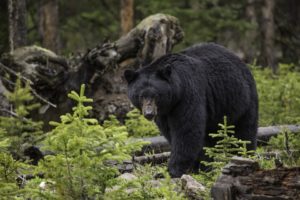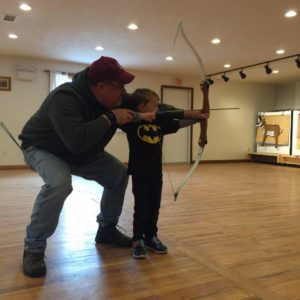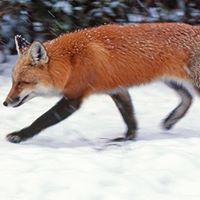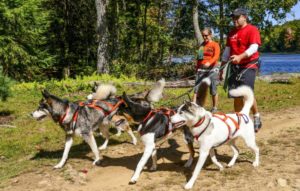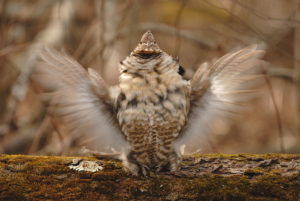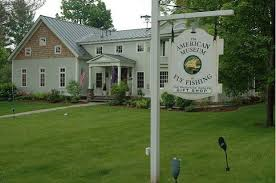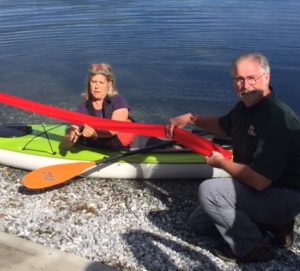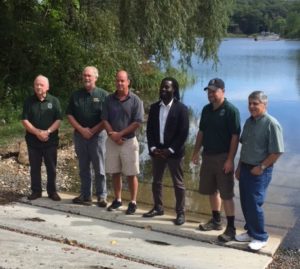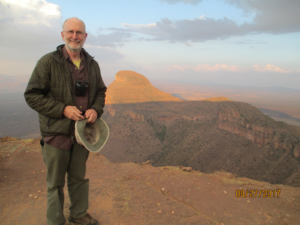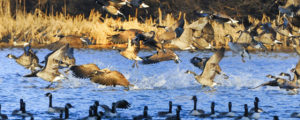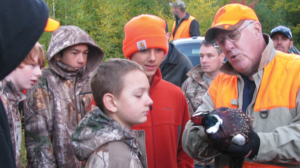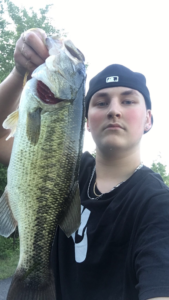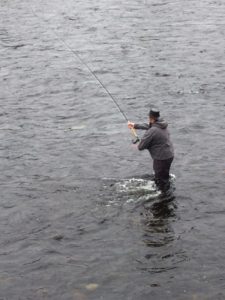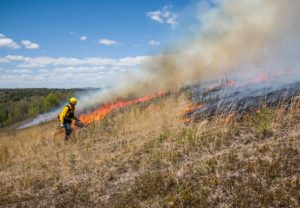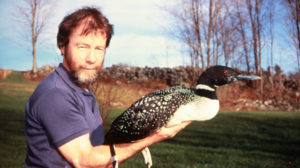Now that the weather has finally turned cold, the ice on our lakes should now be safe to go ice fishing. Most ice fishermen that I know have been chomping at the bits waiting for this time. They already dug out their heavy clothes and ice fishing equipment. Their power augers are tuned up and ready to start drilling holes. Some folks probably rummaged through their freezers for deer burgers. All they have to do is purchase some hamburger rolls and live bait, grab a kid or two and head out onto the lake. Of course they already purchased their 2019 fishing or sporting licenses……..right?
I’m guessing that the ice thickness is somewhere between 6 and 12 inches thick, depending where you go. The higher up in elevation, the more ice on the lakes.
Actually, MassWildlife doesn’t want us to guess the ice thickness. They caution us to always consider ice to be potentially dangerous. One can’t judge ice conditions by appearance or thickness alone; many other factors like water depth, size of waterbody, water chemistry, currents, snow cover, age of ice, and local weather conditions impact ice strength.
New ice is stronger than old ice. Four inches of clear, newly formed ice may support one person on foot, while a foot or more of old, partially thawed ice may not. Ice doesn’t freeze uniformly. They caution you to continue checking ice conditions frequently while venturing out onto the ice.
Stay away from ice formed over flowing water. Avoid traveling onto ice-bound rivers and streams, as the currents make ice thickness unpredictable. Many lakes and ponds may contain spring holes and other areas of currents such as stream inlets that can create deceptively dangerous thin spots.
MassWildlife cautions that before heading out onto the ice, tell someone your plans, including where you are going and when you expect to return. Carry a cell phone in case of emergency and always carry ice picks and rope with you on the ice.
They suggest that you wear a life jacket because it will keep you at the surface and can provide insulation against the effects of cold water. (I suspect that for most of us wearing a life jacket is not practical. We are bundled up so much that we can’t fit the life jacket under or over our bulky clothes. Lately, ice fishing clothes manufactures are making parkas with flotations built inside them. That may be the way to go when you purchase your next parka).
The guidelines below are for clear, blue ice on lakes and ponds. White ice or snow ice is only about half as strong as new clear ice and can be very treacherous. Use an ice chisel, auger, or cordless drill to make a hole in the ice and determine its thickness and condition.
The general rule is that if there is 2 inches or less, stay off the ice. Four inches should support an individual on foot, 5 inches for snowmobiles or ATV’s and a foot or more for a small pick-up truck.
If you fall through the ice try not to panic. Call for help if there are people nearby. Don’t remove winter clothing as air trapped in your clothes can provide warmth and help you float. Turn in the direction from where you came because ice previously walked on should be the safest. Place your hands and arms on an unbroken surface and kick your legs. If you have ice picks or a pair of nails, use them to pull yourself up onto the ice while kicking. Lie flat and roll away. Once your torso is on firm ice, roll toward thicker ice to distribute your weight.
Find shelter and get warm: Change out of wet clothing and find warm, dry coverings. If you are in a remote area, get to or start a campfire. Otherwise, get to a car or house. Seek medical advice from your physician on medical attention.
If someone else falls in: Remember the phrase “Preach-Reach-Throw-Go.” Preach: Call 911 if you can. Shout to the victim to reassure them help is on the way. Reach: If you can safely reach them from shore, extend an object like a rope, jumper cables, tree branch, or ladder to them. Throw: Toss one end of a rope or something that will float to the victim. Go: If the situation is too dangerous for you to perform a rescue, call 911 or go to find help. Untrained rescuers can become victims themselves.
If your pet falls in, don’t attempt to rescue it. but rather go for help. You could become a victim yourself when trying to assist your pet. Always keep pets leashed while walking on or near ice. 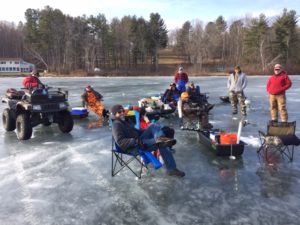
For years the group that I ice fish with had a tongue-in-cheek rule that the oldest guy should go out on the ice first. What the heck, we would laugh, he had lived the longest life. Now that I am the oldest in the group, it doesn’t seem so humorous anymore. Lately, for one reason or another, I just haven’t been able to show up at the lake as early as the others. Darn! There’s usually someone out on the ice by the time I get there.
Firearm Course
The Lee Sportsmen’s Association (LSA) will be having a Multi-License Firearm Course next Saturday from 9:00am until 4:00pm for a proprietary LTC course that qualifies for licenses in Massachusetts, Connecticut, Florida, Utah, Arizona, etc. This comprehensive one-day course includes information for federal and state firearm laws, operation and safe handling of firearms, shooting fundamentals, care and cleaning, concealed carry methods, a live fire session on the pistol range, and much more.
Course fee is $180 for the entire course or take just the MA/CT segment for $150, with live fire. State license application fees and processing are not included. Participants will receive a course certificate, application forms, an informative student resource CD, and supporting documents. All firearms, ammunition, and eye and ear protection will be provided, including lunch as well.
To register, visit https://nrapistolinstructor.com/contact, and provide your full name including middle initial, date of birth, course date, course selection (Multi-License Firearm Course at Lee Sportsmen’s Association), address, telephone, and email contact information. Payment is due in cash at the course. Contact Robert McDermott at (413) 232-7700 or email robmcdermott@verizon.net.
Pheasant Fundraiser Dinner
The LSA will be having its Annual Turkey Shoot and Pheasant Fundraising Dinner next Sunday beginning at 1:00pm. Turkey shoots will be conducted from 1:00pm to 4:00pm. Prizes include: NY Strip steaks, turkeys, pork loins, and spiral hams. Dinner is served at 5:00pm. The cost is $15 per Adult and Children 12 and under are $7. For any questions or if you are interested in helping, contact John Polastri at (413) 822-8278.
Bunny Hunt
The Berkshire Beagle Club will be having its rabbit hunt next Saturday. It is advertised as a fun time with good food and raffle prizes, as well as prizes for largest hare and cottontail rabbit. Participants must the bring their game to the Beagle Clubhouse for the 5:00pm check-in. Hunting takes place on your own, away from clubhouse and grounds. The entrance fee is $20 which includes raffles and dinner. For more information, contact Hunt Chairman John Demary, at (413) 441-2253.
Incidentally, the club held its election of officers for 2019. Al Costa of Westfield, MA was elected President, Dick Kalisz of Adams as Vice President, Tim Cahoon of Pittsfield as Treasurer and Pat Barry of Pittsfield as Secretary.

